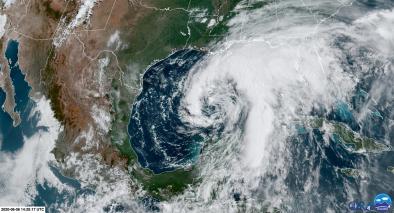Science Source
Climate Modulation of North Atlantic Hurricane Tracks
- Explores the variability of North Atlantic tropical storm and hurricane tracks, and its relationship to climate variability
- Separates tracks from the North Atlantic hurricane database for the period 1950–2007 into four groups using a cluster technique that has been previously applied to tropical cyclones in other ocean basins
- Demonstrates that factors such as El Niño–Southern Oscillation (ENSO), Atlantic meridional mode (AMM), North Atlantic Oscillation (NAO), and Madden–Julian oscillation (MJO) have varying intrabasin influences on North Atlantic tropical storms and hurricanes
- Identifies a shift toward proportionally more deep tropical systems began in the early to mid-1980s more than 10 years before the 1995 North Atlantic hurricane season, which is generally used to mark the beginning of the present period of heightened activity
Related Content
Science Source
| Science
The weakening summer circulation in the Northern Hemisphere mid-latitudes
Dim Coumou, Jascha Lehmann, Johanna Beckmann
Science Source
| Science Advances
Tropical cyclone motion in a changing climate
Gan Zhang, Hiroyuki Murakami, Thomas R. Knutson et al
Science Source
| Proceedings of the National Academy of Sciences
Greater flood risks in response to slowdown of tropical cyclones over the coast of China
Yangchen Lai, Jianfeng Li, Xihui Gu et al
Event

Jun 9, 2020
Atlantic Hurricane Season 2020


